Find Help
More Items From Ergsy search
-
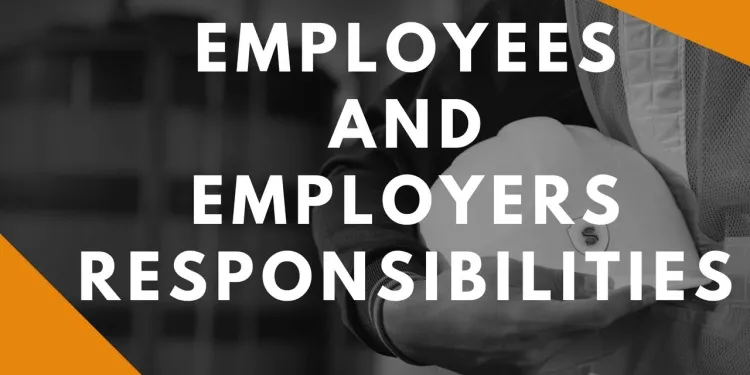
Health and safety responsibilities
Relevance: 100%
-
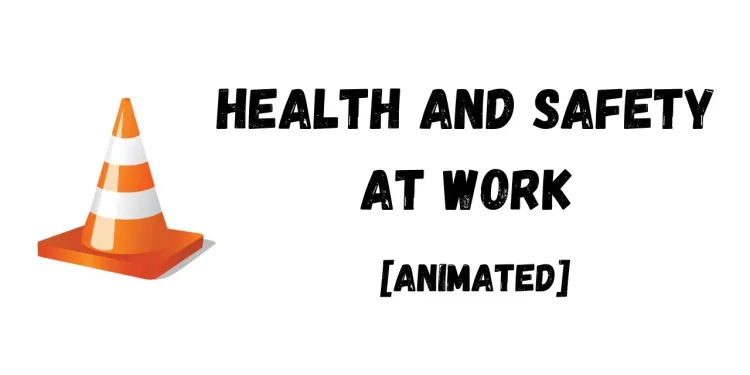
THE LAW IN 60 SECONDS | HEALTH AND SAFETY AT WORK
Relevance: 61%
-

What are my rights regarding workplace safety as a gig worker?
Relevance: 39%
-

Are new emerging pathogens a risk for blood safety?
Relevance: 39%
-

What are some safety programs specifically for seniors?
Relevance: 39%
-

What measures are taken to ensure food safety in school meals?
Relevance: 37%
-

Is there a difference in responsibility between public and private land?
Relevance: 37%
-

Fire Safety At Home
Relevance: 37%
-

Navigating Legal Guardianship and Parental Responsibility in the UK
Relevance: 36%
-
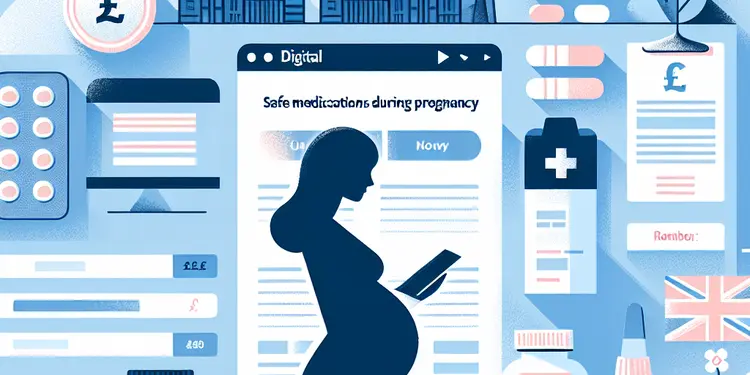
Where can individuals find reliable information on the safety of medications during pregnancy?
Relevance: 34%
-

Who is responsible for assessing SEND needs?
Relevance: 34%
-

Is malaria still a concern for blood transfusion safety?
Relevance: 33%
-

How does cortisol affect the body's stress response?
Relevance: 32%
-

Are water companies responsible for maintaining water infrastructure in the UK?
Relevance: 32%
-
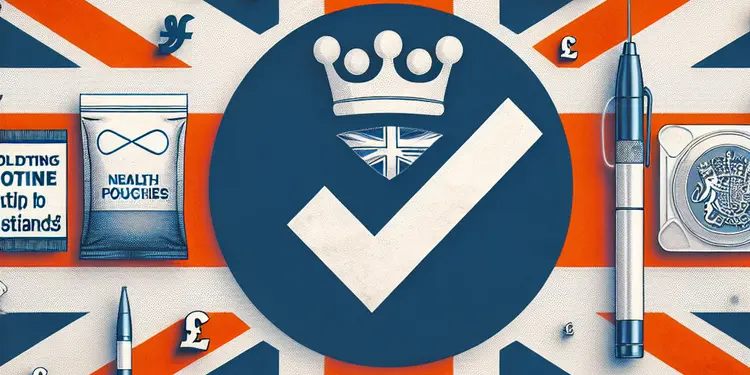
Are nicotine pouches regulated by health authorities?
Relevance: 32%
-

What is the role of the Office for Product Safety and Standards in a recall?
Relevance: 31%
-

Are water companies responsible to maintain and update infrastructure in the UK?
Relevance: 31%
-

Who is responsible for providing school meals in the UK?
Relevance: 31%
-

Who is responsible for paying the deceased’s tax debts?
Relevance: 31%
-

What is a public health funeral?
Relevance: 30%
-

Health Officials Warn Against 'DIY' Health Remedies Amid Supply Chain Issues
Relevance: 28%
-

Why is regular health monitoring important for drivers over 70?
Relevance: 28%
-

Pre eclampsia - NHS Maternity Safety Information
Relevance: 28%
-

What safety precautions should be taken when using mobility equipment?
Relevance: 28%
-

Are beneficiaries responsible for the deceased's tax debts?
Relevance: 27%
-

Which body is responsible for enforcing refunds by UK water companies?
Relevance: 27%
-

Are there any long-term studies on the safety of nicotine pouches?
Relevance: 26%
-
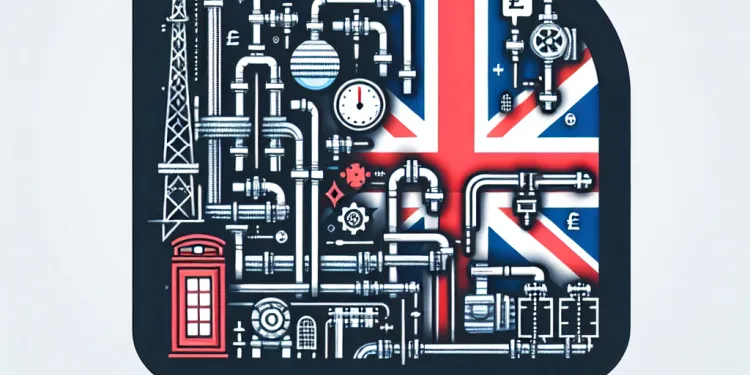
Are customers responsible for any part of the water infrastructure?
Relevance: 26%
-

Are there any health risks associated with nicotine pouches?
Relevance: 25%
-

Harshi’s learning disability annual health check and health action plan
Relevance: 25%
-

What is the difference between a product recall and a safety notice?
Relevance: 25%
-

How are health services provided in prison?
Relevance: 25%
-

Can cortisol levels impact mood and mental health?
Relevance: 25%
-

Has the World Health Organization (WHO) classified Nimbus and Stratus?
Relevance: 25%
-

How can I assess the safety of an elderly person's home?
Relevance: 25%
-

What steps can I take to ensure my baby's safety while sleeping?
Relevance: 25%
-

Understanding Mental Health in Children
Relevance: 25%
-
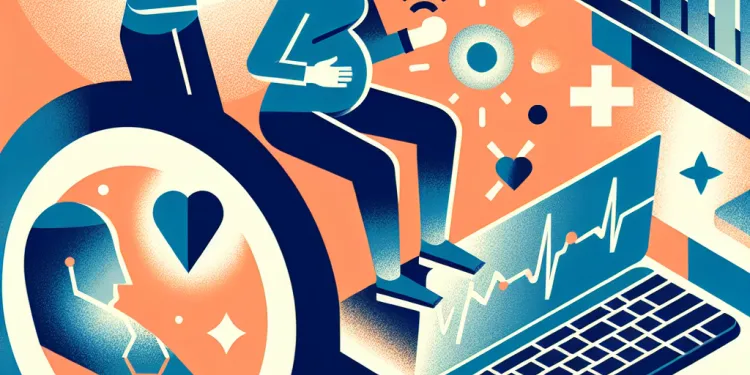
How can I ensure safety during pregnancy exercises?
Relevance: 24%
-

Are fake weight loss drugs often unapproved by health authorities?
Relevance: 24%
-
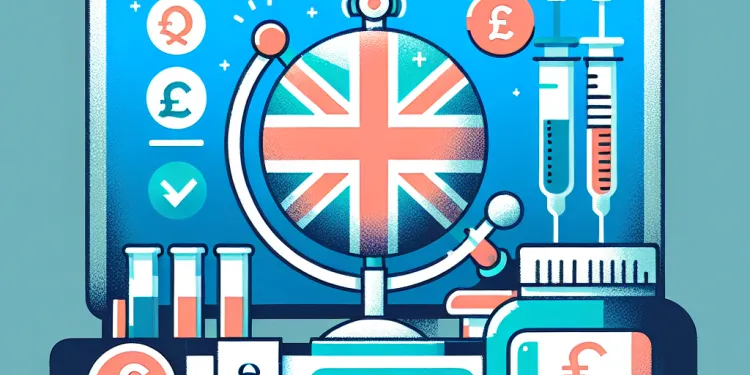
How do health authorities confirm a Marburg virus outbreak?
Relevance: 24%
Health and Safety Responsibilities in the United Kingdom
Ensuring health and safety in the workplace is paramount in the United Kingdom. Employers, employees, and even visitors have roles to play in maintaining a secure environment. This article outlines the responsibilities and legal obligations pertinent to health and safety in the UK.
Employer Responsibilities
Employers in the UK have a legal duty to ensure the health, safety, and welfare of their employees under the Health and Safety at Work Act 1974. They need to conduct risk assessments, implement appropriate measures, and provide necessary training. Furthermore, employers must ensure that health and safety policies are up-to-date and well-communicated. They are also responsible for maintaining equipment, providing personal protective equipment (PPE), and ensuring safe working practices.
Employee Responsibilities
Employees also have significant responsibilities. They must adhere to the health and safety policies and procedures established by their employer. This includes using provided PPE correctly, reporting hazards, and participating in health and safety training. Employees are obligated to take reasonable care of their own health and safety and that of their colleagues.
Visitor Responsibilities
Visitors, including contractors and guests, must follow the health and safety rules of the premises they visit. It is the employer’s responsibility to inform visitors about any potential hazards and the precautions they should take. Visitors should also report any hazards they notice and follow the site’s safety procedures.
Legal Requirements
The Health and Safety Executive (HSE) oversees the enforcement of health and safety regulations in the UK. Failure to comply with these regulations can result in significant legal consequences, including fines and prosecutions. Employers must stay informed about their legal obligations and ensure compliance with all relevant health and safety laws.
Creating a Health and Safety Culture
Developing a strong health and safety culture is essential. This involves the collective effort of everyone in the workplace. Regular training sessions, clear communication, and a proactive approach to identifying and mitigating risks can foster a safer and healthier work environment.
Conclusion
Health and safety responsibilities in the UK are shared among employers, employees, and visitors. By understanding and fulfilling their roles, all parties contribute to a safer workplace. Complying with legal requirements and promoting a culture of safety are key to preventing accidents and ensuring well-being.
Health and Safety Responsibilities in the United Kingdom
In the UK, keeping everyone safe at work is very important. Everyone at work, including visitors, needs to help make sure the place is safe. This article explains what different people need to do to keep things safe.
Employer Responsibilities
In the UK, bosses must keep their workers safe by following the Health and Safety at Work Act 1974. They need to find dangers, fix them, and teach people how to stay safe. Bosses should make sure safety rules are clear and up-to-date. They also need to take care of equipment, give out safety gear like gloves, and make sure everyone works safely.
Employee Responsibilities
Workers must follow the safety rules at their jobs. They should use safety gear correctly, tell someone if something is dangerous, and go to safety training. Workers need to care for their own safety and help keep their coworkers safe too.
Visitor Responsibilities
Visitors, like people fixing things or guests, need to follow the safety rules where they visit. Bosses must tell visitors about any dangers and how to stay safe. Visitors should also tell someone if they see something dangerous and follow safety procedures.
Legal Requirements
The Health and Safety Executive (HSE) makes sure everyone follows safety rules in the UK. Breaking these rules can lead to big problems, like fines. Bosses need to know the safety laws and make sure they follow them.
Creating a Health and Safety Culture
It is really important for everyone at work to think about safety. By working together, having regular safety training, and talking about safety clearly, everyone can help make a safer place to work.
Conclusion
In the UK, employers, employees, and visitors all need to help keep work places safe. By knowing what to do and following safety rules, everyone can help prevent accidents and stay healthy.
Frequently Asked Questions
What are the primary health and safety responsibilities of an employer?
Employers in the UK must ensure, as far as reasonably practicable, the health, safety, and welfare of their employees. This includes providing safe systems of work, maintaining the workplace and equipment, providing training and information, and conducting risk assessments.
What does 'reasonably practicable' mean in health and safety law?
'Reasonably practicable' implies that the risk of a particular action or inaction must be weighed against the time, effort, and cost involved in taking measures to control the risk.
What are employees' responsibilities under the Health and Safety at Work Act?
Employees must take reasonable care of their own health and safety and that of others who may be affected by their actions. They should also cooperate with their employer in health and safety matters and not misuse or interfere with equipment provided for safety.
What must be included in a workplace risk assessment?
A workplace risk assessment should identify potential hazards, evaluate the risks associated with these hazards, determine who might be harmed and how, implement control measures to manage the risks, and review the assessment regularly to ensure its effectiveness.
Who is responsible for health and safety in the workplace?
Both employers and employees have responsibilities. Employers must provide a safe working environment, while employees must adhere to safety protocols and report potential hazards.
Are employers required to provide health and safety training?
Yes, employers must provide adequate health and safety training to ensure employees understand how to perform their work safely and know the risks associated with their job.
What is a Health and Safety Policy and is it mandatory?
A Health and Safety Policy outlines an organisation’s approach to managing health and safety. UK law requires that any business with five or more employees must have a written Health and Safety Policy.
How often should workplace health and safety audits be conducted?
Health and safety audits should be conducted at least annually, but the frequency can vary depending on the nature of the workplace and the associated risks.
What should be done if an employee encounters a health and safety hazard?
The employee should report the hazard to their line manager or health and safety representative immediately. It is important for the issue to be recorded and addressed promptly to prevent accidents.
What are the consequences of not complying with health and safety regulations?
Non-compliance can lead to legal action, substantial fines, and even imprisonment for severe breaches. Additionally, it can result in workplace injuries, decreased employee morale, and reputational damage.
Do health and safety laws apply to remote or home workers?
Yes, employers are responsible for ensuring the health and safety of remote or home workers. This includes conducting risk assessments of the remote workspace and providing guidance on safe working practices.
What role do health and safety representatives play in the workplace?
Health and safety representatives consult with the employer on health and safety issues, investigate complaints, carry out inspections, and represent employees in discussions about health and safety matters.
What is the purpose of a safety committee in a workplace?
A safety committee facilitates cooperation between employers and employees in developing and implementing health and safety measures. It discusses any health and safety concerns and works towards continuous improvement of workplace safety.
Are there specific health and safety regulations for industries with higher risks?
Yes, certain industries such as construction, healthcare, and manufacturing have specific regulations governing their operations to address the unique risks associated with these sectors.
How should accidents and incidents be reported in the workplace?
All accidents and incidents should be reported to the designated health and safety officer or manager. Serious incidents might also need to be reported to the Health and Safety Executive (HSE) under RIDDOR (Reporting of Injuries, Diseases, and Dangerous Occurrences Regulations).
What are the main health and safety jobs an employer has?
Employers must keep workers safe and healthy. Here are their main jobs:
- Make sure the workplace is safe.
- Provide safe tools and equipment.
- Teach workers how to be safe.
- Look after workers' health.
- Follow safety rules.
If you find reading difficult, ask someone for help or use a reading tool on your computer or phone.
In the UK, bosses must make sure workers are safe and healthy. They do this by:
- Keeping workplaces and tools safe.
- Giving training and information to do jobs safely.
- Checking for dangers with risk assessments.
These are ways to keep everyone safe at work.
What does 'reasonably practicable' mean in health and safety law?
'Reasonably practicable' means doing what you can to keep people safe. It is about finding a balance between avoiding risk and the time, effort, and money needed to do it.
Think about what could harm someone and how bad it could be. Then think about how easy it is to stop it. If it is easy to stop the harm, you should do it. If it takes a lot of time, effort, or money and only a little more safety, you might not have to do it.
Try using pictures or checklists to help understand what is important to make things safe.
'Reasonably practicable' means thinking about how dangerous something is and deciding what to do based on how much time, effort, and money it takes to make it safer.
What Should Workers Do to Stay Safe at Work?
Workers need to follow rules to keep safe at work. Here are some important things they should do:
- Listen to their bosses about safety.
- Use tools and machines the right way.
- Wear safety gear like helmets or gloves if needed.
- Tell someone if something is unsafe or broken.
- Keep their work area tidy and clear.
If workers have trouble understanding, they can ask for help or use pictures and videos to learn how to stay safe.
Workers need to be careful about their own safety and the safety of people around them. They should help their bosses with keeping things safe at work. They should not play with or break safety equipment.
What needs to be in a workplace risk check?
A workplace risk check helps keep everyone safe at work. Here are some things it should have:
- Spotting Dangers: Look for anything that might cause harm.
- Who Could Get Hurt: Think about who might be hurt by these dangers.
- How Bad is the Danger: Decide how likely it is that someone will get hurt and how bad it could be.
- Fixing Problems: Plan how to make the dangers less or go away.
- Write it Down: Put all this information in a document so everyone knows.
- Check Often: Look at the plan regularly to keep it up to date.
Use simple words and clear steps. Pictures can help understand better. Ask someone for help if you need it. It's like a list to keep our workspace safe!
A workplace risk assessment is a way to keep people safe at work. It helps find things that might be dangerous. It checks how risky these things are. It also looks at who could get hurt and how they might get hurt. Then, it finds ways to make things safer and stop bad things from happening. It is important to check this plan often to make sure it is working well.
To help with understanding, you can use pictures or simple charts. Ask someone to explain things that are tricky, or use a tool that reads the text out loud. It's okay to ask questions if you need more help!
Who makes sure the workplace is safe?
The boss or manager must make sure the workplace is safe.
They must check that everything is working well.
Everyone should help to keep things safe too.
If you see something unsafe, tell your boss or a manager.
You can also use pictures, videos, or storyboards to help understand better.
Bosses and workers have jobs to do. Bosses must make sure the workplace is safe. Workers must follow safety rules and tell someone if they see something dangerous.
Do bosses have to teach workers about being safe and healthy at work?
Yes, bosses must give good training so workers know how to do their jobs safely and understand the dangers in their work.
What is a Health and Safety Plan and do we need to have one?
A Health and Safety Policy is a plan about how to keep people safe at work. If a business in the UK has five or more workers, the law says they must write down this plan.
How often should you check for safety at work?
It is important to check if work is safe. Doing regular checks can help keep everyone protected. You can use a calendar to remember when to check. You might also use simple checklists to make sure you don't forget anything. Ask for help from a friend if needed.
Health and safety checks should happen at least once every year. But sometimes, they need to happen more often. This depends on the type of work and any dangers there might be.
What to Do if You See Something Unsafe at Work
If you see something dangerous at work, tell your boss or a manager right away. It's important to keep everyone safe. You can also ask for help if you are not sure what to do. Remember, it's okay to speak up!
If a worker sees something dangerous, they should tell their boss or the safety person right away. This needs to be fixed quickly to stop anyone from getting hurt.
What happens if you don't follow health and safety rules?
If someone does not follow health and safety rules, bad things can happen. Here are a few:
- People might get hurt.
- You might have to pay a lot of money.
- The place might have to close for a while.
To help follow the rules, you can:
- Use pictures or signs to remind everyone about safety.
- Ask someone to explain the rules clearly.
If you don’t follow the rules, you might have to go to court, pay a lot of money, or even go to jail if the rules are broken badly. Also, it can make people get hurt at work, make workers unhappy, and hurt the company’s reputation.
Do health and safety rules apply to people working from home?
Yes, health and safety rules are important for everyone, even if you work from home.
Your boss should make sure you have a safe place to work. They can help check your desk, chair, and computer setup.
If you need help, you can ask your boss for support. You can also use tools like a comfy chair or a computer stand. These can help you work safely at home.
Yes, bosses must keep remote or home workers safe and healthy. They should check the home work area to make sure it is safe and give advice on how to work safely.
What do health and safety helpers do at work?
Health and safety helpers make sure everyone is safe at work. They help look out for dangers and keep people from getting hurt. If something is not safe, they tell the boss. They also teach people how to be safe.
Tools that can help:
- Pictures or signs showing safe ways to work.
- Easy-to-read safety cards with big letters and simple words.
- Talking to someone who explains safety clearly.
Health and safety helpers talk to the boss about keeping people safe. They check for problems, look into complaints, and speak up for workers about safety issues.
Why do we have a safety committee at work?
A safety committee helps keep everyone safe at work.
Here are some things they do:
- Look for things that might be dangerous.
- Talk about how to fix these dangers.
- Help everyone know the safety rules.
- Make sure people follow the safety rules.
You can use these tools to help understand more:
- Ask someone to read the information with you.
- Use pictures to help explain the safety topics.
- Watch videos about staying safe at work.
A safety committee helps people work together. Employers (bosses) and employees (workers) share ideas. They talk about health and safety at work. They make plans to keep everyone safe and healthy. If there are problems, they work to fix them. They always try to make the workplace safer.
Are there special health and safety rules for risky jobs?
Yes, some jobs have special rules to keep people safe. These jobs include building work, taking care of sick people, and making things in factories.
How to Tell Someone About an Accident at Work?
If someone gets hurt or something goes wrong at work, it's important to let others know. Here's how to do it:
- Tell your boss or a grown-up right away.
- Write down what happened. You can ask for help if you need.
- Use simple words to describe the accident.
- Add details like the date and time.
- Say where it happened and who was there.
If you want to be extra sure, you can also:
- Take a picture with a phone or camera.
- Draw a picture of what happened.
If you find it hard to write, you can ask someone to help you or use voice-to-text on a phone or computer.
You must tell the safety officer or manager about all accidents and incidents. If something very serious happens, you might also have to tell the Health and Safety Executive (HSE). This is called RIDDOR.
Useful Links
- Ergsy carfully checks the information in the videos we provide here.
- Videos shown by Youtube after a video has completed, have NOT been reviewed by ERGSY.
- To view, click the arrow in centre of video.
- Most of the videos you find here will have subtitles and/or closed captions available.
- You may need to turn these on, and choose your preferred language.
- Go to the video you'd like to watch.
- If closed captions (CC) are available, settings will be visible on the bottom right of the video player.
- To turn on Captions, click settings .
- To turn off Captions, click settings again.
More Items From Ergsy search
-

Health and safety responsibilities
Relevance: 100%
-

THE LAW IN 60 SECONDS | HEALTH AND SAFETY AT WORK
Relevance: 61%
-

What are my rights regarding workplace safety as a gig worker?
Relevance: 39%
-

Are new emerging pathogens a risk for blood safety?
Relevance: 39%
-

What are some safety programs specifically for seniors?
Relevance: 39%
-

What measures are taken to ensure food safety in school meals?
Relevance: 37%
-

Is there a difference in responsibility between public and private land?
Relevance: 37%
-

Fire Safety At Home
Relevance: 37%
-

Navigating Legal Guardianship and Parental Responsibility in the UK
Relevance: 36%
-

Where can individuals find reliable information on the safety of medications during pregnancy?
Relevance: 34%
-

Who is responsible for assessing SEND needs?
Relevance: 34%
-

Is malaria still a concern for blood transfusion safety?
Relevance: 33%
-

How does cortisol affect the body's stress response?
Relevance: 32%
-

Are water companies responsible for maintaining water infrastructure in the UK?
Relevance: 32%
-

Are nicotine pouches regulated by health authorities?
Relevance: 32%
-

What is the role of the Office for Product Safety and Standards in a recall?
Relevance: 31%
-

Are water companies responsible to maintain and update infrastructure in the UK?
Relevance: 31%
-

Who is responsible for providing school meals in the UK?
Relevance: 31%
-

Who is responsible for paying the deceased’s tax debts?
Relevance: 31%
-

What is a public health funeral?
Relevance: 30%
-

Health Officials Warn Against 'DIY' Health Remedies Amid Supply Chain Issues
Relevance: 28%
-

Why is regular health monitoring important for drivers over 70?
Relevance: 28%
-

Pre eclampsia - NHS Maternity Safety Information
Relevance: 28%
-

What safety precautions should be taken when using mobility equipment?
Relevance: 28%
-

Are beneficiaries responsible for the deceased's tax debts?
Relevance: 27%
-

Which body is responsible for enforcing refunds by UK water companies?
Relevance: 27%
-

Are there any long-term studies on the safety of nicotine pouches?
Relevance: 26%
-

Are customers responsible for any part of the water infrastructure?
Relevance: 26%
-

Are there any health risks associated with nicotine pouches?
Relevance: 25%
-

Harshi’s learning disability annual health check and health action plan
Relevance: 25%
-

What is the difference between a product recall and a safety notice?
Relevance: 25%
-

How are health services provided in prison?
Relevance: 25%
-

Can cortisol levels impact mood and mental health?
Relevance: 25%
-

Has the World Health Organization (WHO) classified Nimbus and Stratus?
Relevance: 25%
-

How can I assess the safety of an elderly person's home?
Relevance: 25%
-

What steps can I take to ensure my baby's safety while sleeping?
Relevance: 25%
-

Understanding Mental Health in Children
Relevance: 25%
-

How can I ensure safety during pregnancy exercises?
Relevance: 24%
-

Are fake weight loss drugs often unapproved by health authorities?
Relevance: 24%
-

How do health authorities confirm a Marburg virus outbreak?
Relevance: 24%


